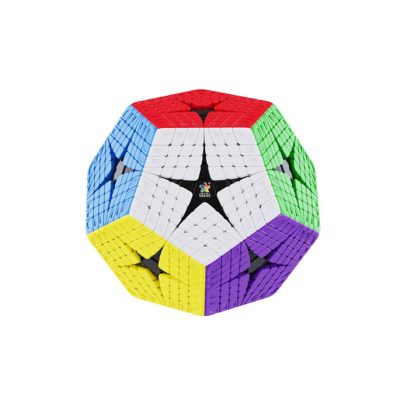-
 Dave Vinke
Dave Vinke
- Leestijd: 5 min
- Laatst geüpdatet: 29/08/2025
Starting a model building club requires at least 3-5 enthusiastic members, a suitable location for meetings, a basic budget of approximately £200-500 for startup costs, and about 2-4 hours per week time investment. You’ll also need basic supplies like tables, lighting, and storage space. With proper planning and the right approach, you can build a thriving club within a few months.
What do you need to start a model building club?
To start a model building club, you need at least 3-5 dedicated members, a startup budget of £200-500, basic supplies like tables and lighting, and approximately 2-4 hours per week for organisation and meetings.
The minimum number of members is around 3-5 people to create a stable foundation. With fewer members, it becomes difficult to ensure continuity when someone can’t attend. You can certainly start with two people, but focus immediately on expansion.
For basic supplies, think about workable tables with sufficient space, good lighting (daylight lamps are ideal for detailed work), storage options for materials and tools, and ventilation for working with glue and paint. A small library of model building magazines and instruction books makes a valuable addition.
The startup budget of £200-500 usually covers the first few months’ rent, basic tools for communal use, and some starter materials. Many clubs finance this through a small membership fee from members or sponsorship from local businesses.
Regarding time investment, most clubs plan weekly meetings of 2-3 hours, plus preparation time for activities and administration. As a founder, you’ll probably invest somewhat more time, especially in the beginning.
Where can you find the right location for your model building meetings?
Community centres, libraries, schools, and local halls often offer affordable spaces for hobby associations. Look for locations with good lighting, sufficient table space, storage facilities, and nearby parking.
Community centres and local halls are often the most practical choice. They usually have reasonable rates for associations, adequate space, and necessary facilities. Many councils subsidise these types of activities, which further reduces costs.
Libraries sometimes offer meeting rooms or separate halls for hobby groups. The advantage is the quiet environment and often free wifi. Ask about their policy for hobby activities, as not all libraries allow the use of glue and paint.
Schools often rent out classrooms in the evenings and weekends. Technology or craft rooms are perfect because they’re already set up for practical work. Contacting the caretaker or headteacher often yields good results.
Private options like garages or sheds belonging to members can work temporarily, but consider insurance and accessibility for all members. For the long term, a neutral, accessible location is usually better.
Tips for finding spaces: call various options, ask about discounts for associations, check availability on your preferred days, and always arrange a viewing first.
How do you attract enthusiastic model building enthusiasts as members?
Social media, local advertisements, partnerships with hobby shops, and word-of-mouth work best for member recruitment. Create an attractive club identity with clear benefits like group purchasing, knowledge sharing, and fellowship.
Facebook groups and local community pages reach many hobbyists in your area. Post regular photos of your projects, upcoming meetings, and fun club moments. Authentic content works better than formal announcements.
Local advertisements in neighbourhood magazines, on supermarket notice boards, and at hobby shops attract people who might not be active on social media. Create a simple flyer with contact details and what your club has to offer.
Partnerships with hobby shops can be very valuable. Many retailers are happy to display flyers or refer customers to local clubs. Some shops also organise demo days where you can participate as a club.
Word-of-mouth remains very powerful. Encourage members to invite friends and family to a trial meeting. Occasionally organise an open day where interested people can have a look without commitment.
For an attractive club identity, focus on what makes you unique: specific model building specialisations, the friendly atmosphere, joint projects, or special supplier discounts. Make this clear in all your communication.
What activities make your model building club successful?
Successful model building clubs combine workshops, competitions, exhibitions, joint projects, and guest speakers. Variety in activities keeps members engaged and attracts new people with different interests and skill levels.
Workshops are perfect for knowledge sharing and learning new techniques. Have experienced members share their specialities, such as weathering techniques, painting methods, or specific model types. Plan approximately one workshop per month.
Internal competitions stimulate creativity and give members a goal to work towards. Organise themed competitions like “best aircraft”, “most creative diorama”, or “best beginner’s model”. Ensure fair categories for different skill levels.
Exhibitions, both for the public and other clubs, showcase what you can do and work as advertising. Start small with a stand at a local event or in the library. Larger model building shows come later.
Joint projects like building a large diorama or recreating a historical scene strengthen club bonds. Everyone contributes according to their ability, and the end result is something to be proud of.
Guest speakers from other clubs, museums, or the model building industry bring new perspectives and expertise. Many people enjoy sharing their knowledge, especially if you cover travel costs.
Plan activities about 2-3 months ahead, alternate different types, and regularly ask members for feedback on what they enjoy and what they’d like to learn.
How do you organise the practical aspects of your model building club?
Good organisation requires a simple member registration system, clear membership fee structure, fixed meeting schedule, effective communication between members, and clear task distribution. Keep administration simple but complete.
For member registration, a simple Excel file or Google Sheets document is often sufficient. Record contact details, membership date, fee payments, and any specialisations. Respect privacy and ask permission for photos and communication.
The membership fee structure must be fair and transparent. Many clubs work with a fixed amount per month or quarter, for example £10-20 per month. Use this to cover fixed costs like rent, basic materials, and insurance.
A fixed meeting schedule creates clarity for everyone. For example, every Thursday evening from 7:00 to 10:00 PM, or Saturday afternoon from 2:00 to 5:00 PM. Communicate changes well in advance and account for holidays.
For communication, a WhatsApp group works well for daily matters, supplemented with email for important announcements and invitations. Some clubs also use Facebook groups or Discord servers.
Distribute tasks like treasurer, secretary, activities committee, and purchasing across different members. This prevents everything falling on one person and gives everyone ownership of the club.
Where can you find the best model building materials for your club?
Quality and affordable model building materials can be found at specialised webshops, local hobby stores, and wholesalers for associations. Group purchases significantly reduce costs and create benefits for all members.
Specialised webshops like our model building collection offer extensive ranges with good product information and fast delivery. The advantage of online shopping is the large selection and often better prices than physical stores.
Group purchases are one of the biggest benefits of club membership. By ordering together, you often get significant discounts. Plan this well and make clear agreements about payment and distribution.
Local hobby shops offer personal advice and you support the local economy. Build a good relationship with the owner – this often results in special prices or early access to new products.
For clubs that regularly order large quantities, special association rates are often available. Enquire with suppliers about discount schemes for associations and group orders.
Essential materials for clubs are paint, brushes, glue, sandpaper, basic tools, and popular models for beginners. Keep a small stock of frequently used items, but avoid large investments in materials that will sit around for a long time.
Tip: make agreements with members about using club materials and ensure a simple system to track what’s being used. This keeps costs transparent and fairly distributed.
Frequently Asked Questions
How do you handle conflicts between club members with different model building preferences?
Establish clear club guidelines that allow room for different specialisations like aircraft, cars, ships, and military models. Organise alternating activities for different categories and encourage knowledge exchange between specialisations. When there are disagreements about club direction, vote democratically and respect the majority.
What do you do if your club grows too quickly and the location becomes too small?
Plan ahead for growth by maintaining waiting lists and contacting alternative locations. Consider splitting into two groups on different days or organising rotating meetings. If necessary, increase membership fees to afford a larger space, but communicate this transparently to all members.
How do you keep beginner members motivated who feel intimidated by experienced model builders?
Organise special beginner sessions and pair new members with experienced mentors. Start with simple projects that quickly lead to results and celebrate small successes. Create a separate category for beginners in competitions and encourage experienced members to be patient and supportive.
What insurance do you need for a model building club?
Take out liability insurance for association activities through an insurer that specialises in hobby associations. Check whether the venue rental already covers insurance and enquire with the council about possible subsidies for association insurance. Costs usually range between £50-150 per year.
How do you prevent one person from taking on all the organisational tasks?
Distribute tasks across at least 3-4 people from the beginning and rotate responsibilities annually. Create a task overview with clear descriptions and time investment per role. Organise an annual general meeting where new committee members are chosen and ensure that no one holds the same position for longer than 2-3 years.
What are the most common reasons why model building clubs cease to exist?
Lack of new members, too much dependence on one person, financial problems due to poor planning, and losing a suitable location are the main causes. Prevent this by actively recruiting, spreading tasks, maintaining a financial buffer of at least 3 months' costs, and always having a backup location in mind.
How do you organise a successful open day to recruit new members?
Plan the open day on a Saturday or Sunday, arrange diverse demonstrations of different model building techniques, and let visitors try small projects themselves. Prepare information leaflets with club benefits and contact details, offer coffee/tea, and ensure enthusiastic members are present to answer questions and share stories.
Table of contents
Much viewed
More blogs

Which digital tools help with model building planning?

How do you photograph model building projects professionally?






